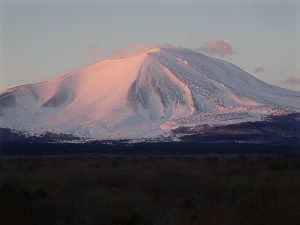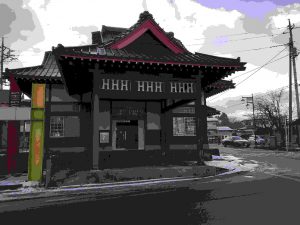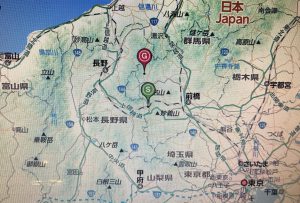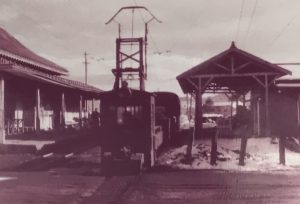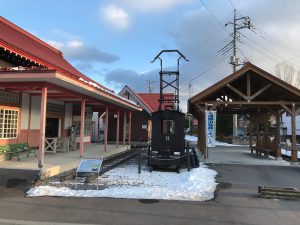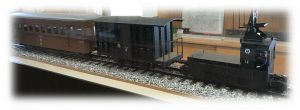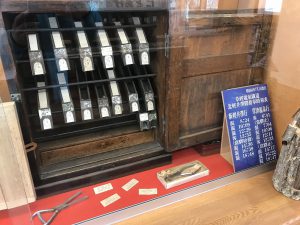A Small History Private Inquiry; abolished Kitakaruizawa Station
Hi, this is Fe@NJ , who has passed Second Grade of Timetable Test in Japan.
I stayed in Kitakaruizawa, Naganohara Town, Gunma Prefecture, Japan, known as the all-season resort on the New Year days.
Kitakaruizawa reminds us of Mt. Asama.
①Pink Asama, the view from hotel’s veranda.
At the town center of Kitakaruizawa, the remains of Kitakaruzawa Station of Kusakaru Electric Railway (abbreviated as Kusakaru), which became obsolete in 1962, have been well reserved.
②Kitakaruzawa Station(North Side)
It seems that this building imitated Zenkoji Temple. As described later, “H“s of the initial are arranged in the fanlight in relation to “Hosei University village“. Also, it should be noted that the gym of “Pokémon GO” is now located.
The Kusakaru was crowded as a route connecting 34.5 miles between Karuizawa Town, Nagano Prefecture and Kusatsu Town, Gumma Prefecture, two distinguished tourist destinations in two and a half hours to three hours, Nevertheless, it was affected by the opening of Naganohara Line of JNR (JR, currently) between Shibukawa and Naganohara (*), the motorization, the impact of the typhoon, etc., then, was obliged to discontinue the service.
(*) After that, the Naganohara Line was renamed to Agatsuma Line, and Naganohara station was renamed to Naganohara-Kusatsuguchi station.
③S: Karuizawa, G: Kusatsu, ●: Tokyo (lower right)
On the explanation board of this remains, the following is written:
Many tourists enjoying the sightseeing and the hot springs used the line to view Mt. Asama and that is greatly influenced the economic development of the wayside region. Around 1930, Hosei University’s village was formed around this area and new station building was built by the school officials. The Railroad became the abandoned railway in 1962 by the influence of the harm from the successive typhoon and the motorization. This Kitakaruizawa station building is the only one station building that has kept the appearance of those days. It was registered tangible cultural properties of Japan in 2006.
| ④The Station, now: |
| A full-size model of an electric locomotive is set up. The shape of the pantograph is characteristic. |
| ⑤The Station of the active era: |
| An enlarged photograph of the explanatory board on the lower left of ④. |
⑥Precision model of train
Its standard organization seems to be three vehicles, namely, an electric locomotive, one freight car and one passenger car.
⑦The reproduced scenery of the ticket office
This was the era when there was no automatic ticket vending machine.
The blue board with white letters is the timetable at the right end.
I do not know the Kusakaru before the abandonment, but it was a deep emotional ‘small journey’ that can taste the middle of Showa era.
Thank you and have a nice trip in Japan!
Fe@NJ
